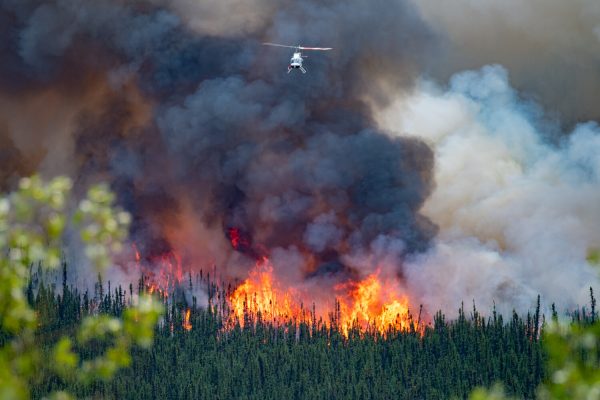Climate emergency – a burning issue
Ginny Colling was passionate about the environment before retiring from teaching college communications students. After retiring she trained with Al Gore’s Climate Reality Project and has presented to numerous groups about the climate crisis.

Hundreds dead. A billion sea creatures baked in their shells. Fruit cooked on the trees. Canadian heat records shattered three days in a row in Lytton, B.C. Then, on day four, the community burned to ashes.
Many of us switched our attention from COVID coverage to the devastation of the climate crisis as we heard the news from the West this summer.
Those with family or friends there heard their alarm. Repeated days of 40C+ temperatures had them scrambling to stay cool, with their bags packed in case nearby forest fires forced an evacuation. My concern came in hearing of that new Canadian temperature record in Lytton , 49.6 C, a heat usually associated with Jacobabad, Pakistan, one of the hottest places on the planet.
Maybe for some it’s still a faraway concept, this climate heating. We in the milder climes of the Great Lakes Basin have been spared much of the worst effects, so far. But we’re seeing it here now. And it’s in my backyard. Literally.
In mid-November a tree leafed out behind our house, obviously confused about the season. Globally it was the hottest November on record.
In May last year, our elderly dog picked up a black-legged tick — the Lyme disease-carrying kind — in our backyard. These ticks are recent arrivals to the Kawarthas. They’ve been expanding their range, in part thanks to warmer, shorter winters that mean fewer of them die off.
The warm temperatures that allow ticks to survive and thrive do the same for gypsy moths and the emerald ash borer. Two years ago our neighbours had 20 trees — mostly ash — removed because of that invasive insect.
And while this year we haven’t experienced the drought that we’ve seen in some recent springs, last year we did. The farm where we buy our vegetables lost 2,000 broccoli and cauliflower plants, and a thousand row-feet of several types of greens. Droughts aren’t new, but now they’re longer, more frequent, more extreme.
For us, a 30-degree day is extremely hot. In the not so distant past (1976-2005) we saw about eight extremely hot days a year. In recent years, we’ve seen 25 of those days or more. That number is expected to reach 50 in coming decades if we do nothing, according to the Canadian Climate Atlas.
So what can we do?
- Talk about it. Since Canadians love to talk about the weather, that should be easy. But weather is not climate, so let’s make the connection and share what we’re doing to help.
Someone once said talking about the climate crisis was a little like passing gas at a cocktail party. It tended to clear the room. Most wanted to avoid that uncomfortable discussion. We need to turn that discomfort into action — maybe look at how we can reduce our own energy consumption such as our use of gas on the road and natural gas at home.
- Call or write our politicians at all levels. Push them for stronger action, like regulations for electric vehicles and energy-efficient homes and buildings, and diversion of billions in oil sands subsidies to transition us to a clean, low-carbon economy with good-quality jobs.
What we saw in the West, and what we’re seeing here in our own backyards, isn’t going away. Our kids will never experience the climate we did. That’s gone. But we can improve the climate they will inherit if we do everything we can, as fast as we can, to shift to clean energy. It’s up to us now. Because the status quo is burning us alive.








